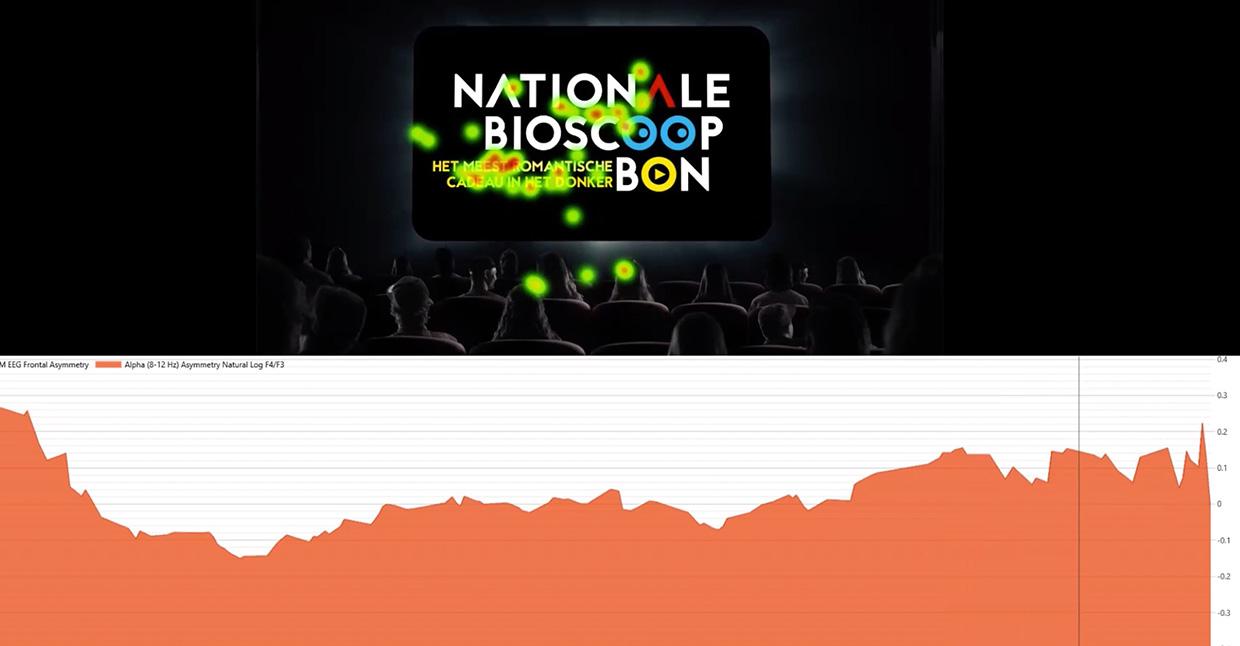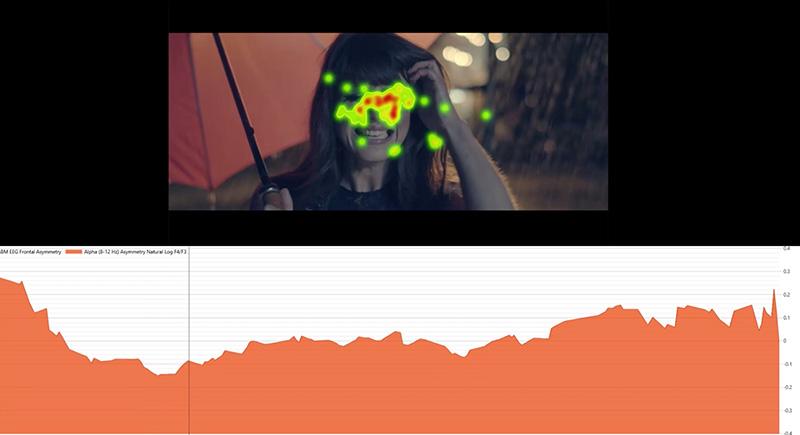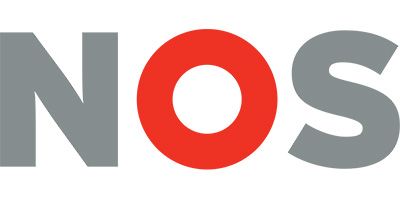
Spontaneous brand awareness decreased, but sales increased… Neuro explains how this is possible
The Case of the Dutch National Cinema Voucher
When the Dutch National Cinema Voucher assessed the effects of their 2018 campaign, they had to blink twice at the results.
What was the situation? On one hand, the campaign had an undeniably positive impact on the number of National Cinema Vouchers sold. At the same time, a check of 'spontaneous brand awareness' – a classic indicator of brand health – showed that the brand's top-of-mind position had declined.
In short: more people bought the cinema voucher, but they thought of it less often.
How is this possible? Unravel conducted a neuromarketing study to further analyse the campaign and discovered the true reason behind these seemingly contradictory results.
The Commercials in the Brain
We measured the viewing patterns and brain data of 4 commercials and 1 tag-on among 32 respondents. Advertising research with EEG predicts the impact on sales on average three times better than traditional survey research.
Based on the measured brain response, we saw that 4 out of 5 commercials are highly likely to have a positive impact on sales. Each advertisement was entirely shot in the style of a specific genre, and we observed interesting differences:
- Action > positive impact on sales
- Animation > positive impact on sales
- Comedy > most positive impact on sales ?
- Romance > no impact on sales ?
- Tag-on > Positive impact on sales
Why Doesn't the Romantic Commercial Appeal to the Brain?
A content analysis shows the viewer's emotional response from second to second. The commercial opens with a quarrelling couple, followed by the man getting a glass of water in his face and a crying woman. This was precisely the moment when the viewer's emotion was most negative. We often see this; the viewer experiences the emotions from the advertisement, making predominantly negative emotions dangerous.

Apart from this negative outlier, we can speak of an exceptionally effective campaign overall. But how does this reconcile with the decline in brand awareness observed by the National Cinema Voucher?
What Spontaneous Brand Awareness Fails to Measure
Memory is crucial for the effectiveness of a commercial. There is only one path from the moment one sees the advertisement to the moment one purchases the cinema voucher: the memory traces left by the advertisement.
There is therefore no doubt about the importance of memory activation in advertising. However, spontaneous brand awareness as a brand equity metric after a campaign is increasingly revealing its flaws, caused by the growing knowledge among (consumer) psychologists about how our memory works.
Psychologists distinguish between explicit and implicit memory. Explicit memory is the form of memory where one can consciously recall facts and events. When you remember the punchline of a joke or a slogan from an advertisement, your explicit memory is at work.
Implicit memory works differently. This - more automatic - form of memory builds stronger connections in our brain outside our consciousness between different thought structures activated during the advertisement.
Our implicit memory is, for example, responsible for us automatically experiencing feelings of cosiness and happiness with Coca Cola. An association likely originating from the many Santas and smiling people the brand projects onto our retina.
Only in the last ten years have consumer psychologists established that the effect of advertising occurs very little through explicit memory. Implicit memory turned out to be the invisible force that made one campaign succeed and another fail. In advertising, it's not about the message, but about the subtle associations that find their way into the brain unnoticed along this message.
Spontaneous brand awareness purely measures explicit memory and thus overlooks the real impact of an advertisement on the brand. Thanks to implicit memory, one does not need to actively remember the advertisement for it to work. When we look at the approach of the Cinema Voucher commercials and the brain's response to them, it seems that this also happened here.
Why Had Spontaneous Brand Awareness Decreased?
From a police raid during an action film to a comedy clip where a pet owner completely loses control of his dog. Each advertisement of the National Cinema Voucher campaign places the viewer directly in the middle of a highlight of a feature film. This experience-oriented approach seamlessly aligns with how the brain optimally processes an advertisement: the viewer experiences positive emotion, without being fatigued by an overly explicit message. Implicit memory over explicit memory.
The brain data shows that the Cinema Voucher commercials succeed well in this. The emotion is positive in 4 out of 5 commercials, and the workload (activation of working memory) is relatively low. This is an optimal condition in which the company 'on autopilot' links positive emotion to the brand. One may not actively remember the advertisement or the cinema voucher, but the brand will climb higher on the mental attractiveness ladder!
The EEG data shows what spontaneous brand awareness misses: the ability of an advertisement to unconsciously make the brand more attractive. That the campaign performs well in this area is visible in the sales increase achieved by this campaign.
Gratis Webinar: "Vijf Gouden Wetten voor Effectieve Reclame 🧠"
In dit lunch-webinar onthullen we vijf gouden wetten voor effectieve reclame, gebaseerd op meer dan 800 onderzochte reclames.
Wil jij weten:
🧠 Welke strategieën werken, en welke absoluut niet?
🧠 Wat de rol is van het merk?
🧠 Hoe je met neuro consistent effectievere campagnes maakt?
Bekijk dan nu de 45 minuten durende webinar terug!
Bekijk de webinar via deze link






